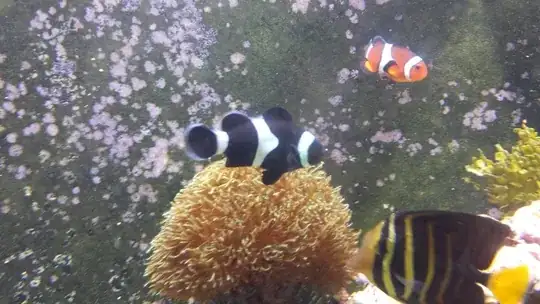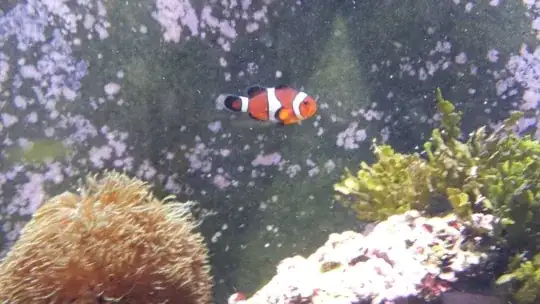I have gained a bit of experience since then as well as had an unfortunate Act of Poseidon that has granted me a mulligan on clownfish. I'll share my insight.
Many factors come in to play when determining the aggression of a fish:
Their Natural Temperament
This is typically rated as non-aggressive, semi-aggressive, or aggressive (some use the word bold). Often the non-aggressive is given the subtext of except with conspecifics. This by definition is a fish of the same species, but often colloquially extends to fish that just look similar (often congenitals). Clownfish are most definitely in the non-aggressive except with conspecific category. But there's more to it.
Where did they come from?
Wild caught fish are much more predisposed to being aggressive. They were born into a life of competition, and see similar fish as having the same diet and consequently taking food right out of their mouths.
How long has the fish been here and how old/big is it?
The longer a fish is in a habitat, the more dominate it will feel over it. Among other species, this is often a problem (keyword, often). Same thing for with a fish becoming older/larger. When mixing fish that have potential to be aggressive toward one another, it's best to mix them when they're young and small. Some species will get along great until they mature and develop problems later on. Clowns are however one that is known stay friends as long as they had a good start. That's not to say you can't maintain ordered chaos. Large tanks (generally considered 100gal or larger) with a plethora of rockwork, can sometimes support "multiple territories". This is difficult to maintain and especially complicates feeding. In the case of clownfish though, the presence anemone(s) can increase the chance of success. You can also mix these factors to increase your chance of success. This is a gamble and takes experience to get right, but it's in the realm of possibility. A perfect example is when mixing tangs, you always want to introduce the least aggressive fish first, let them get established, and move down the list; keeping within bounds.
How big is their school?
Clownfish are recommended to be kept singly or in pairs; it's just that simple. Other, more aggressive fish, such as tangs, are often best left solo. However, especially in the case of the yellow tang, they are known to thrive in a group if introduced as a ground at a young age. This has actually been shown to reduce overall aggressiveness down the line.
The Introduction
You can minimize harassment by introducing the fish at night. Another method that has been really helpful for me with potentially aggressive species is to house the new few fish in a breeder net for a few days. This keeps the fish in close proximity without the possibility of them hurting one another.

